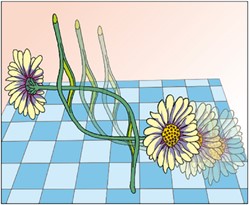Molecular structures that are linked only by mechanical bonds enable the study of intermolecular-type interactions within a single molecule. Such structures often present a conformation that correspond to a thermodynamic minimum, in which the mechanical bonds keep the different parts of the molecule close together and in a certain alignment, usually referred as a “station”. The presence of modifiable stations allows the molecule to be switched between different conformations by an external trigger enabling to study motion within mechanically interlocked structures in a controlled manner. But what happens in the absence of stations?
Interestingly, the absence of stations in daisy chains would allow the linear sliding motion of the different components with respect to each other to have an increased conformational freedom and a broad distribution over various geometries. In this study Mayor and co-workers report the synthesis of a daisy chain dimer without a preferred low energy arrangement of the mechanically linked components. The preparation relies on an active metal template Cadiot–Chodkiewicz reaction, with bipyridine subunits in the macrocycle coordinating the copper ion during the assembly of the axles. Moreover, variable temperature UV–vis and NMR spectroscopy experiments were conducted to study the dynamic sliding motion in the daisy chain, indicating significant mobility persists even at low temperatures.
- Synthesis of a Station-Less Molecular Daisy Chain
Charlotte Kress, Daniel Häussinger, David A. Leigh, and Marcel Mayor
Chem. Eur. J. 2025
doi.org/10.1002/chem.202501369




